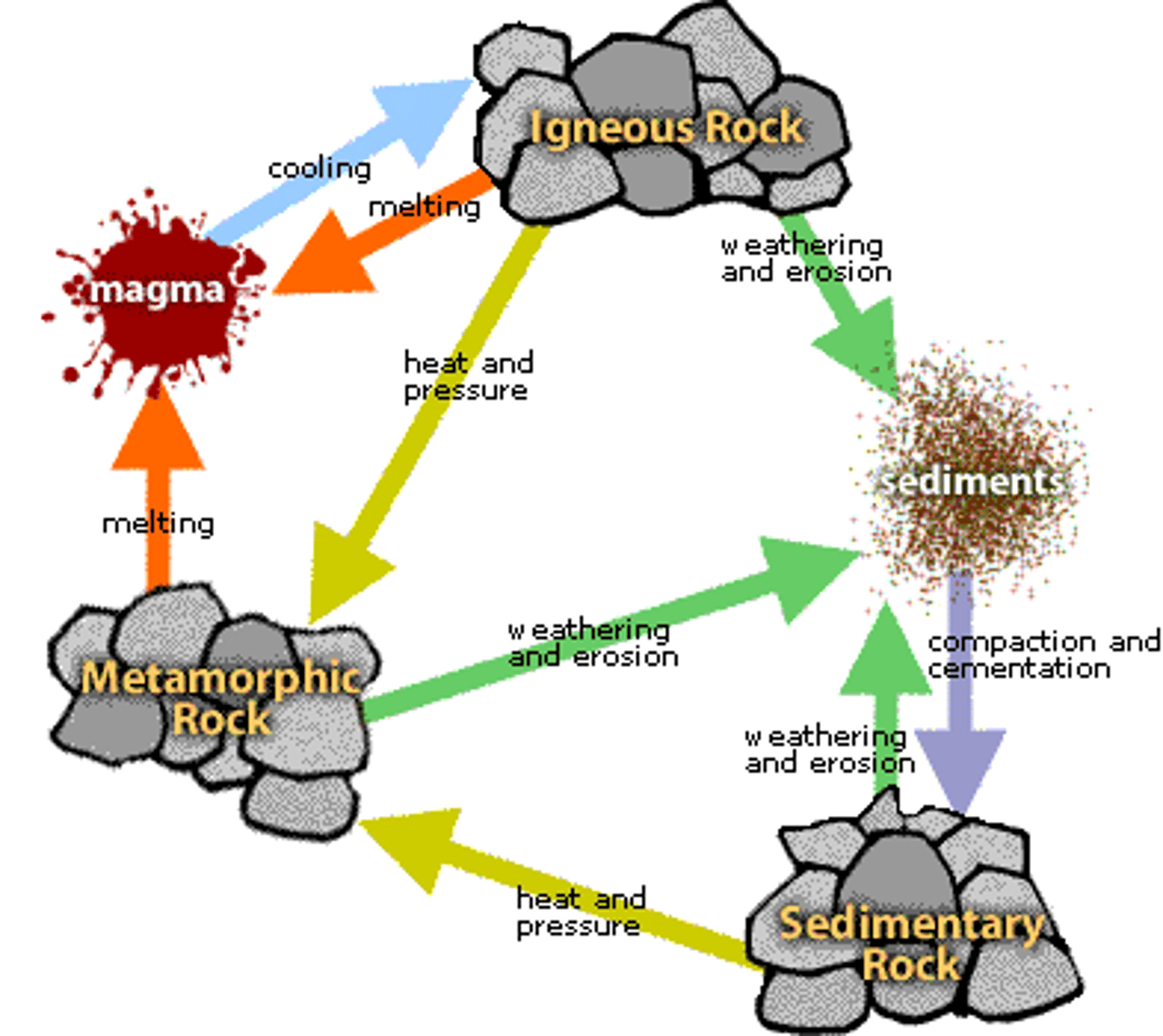Science test: rocks, minerals and ores
1/31
There's no tags or description
Looks like no tags are added yet.
Name | Mastery | Learn | Test | Matching | Spaced |
|---|
No study sessions yet.
32 Terms
metamorphic rock
A type of rock that forms from an existing rock that is changed by heat, pressure, or chemical reactions.
Rock cycle processes
Cooling and Hardening
Melting
Heat and Pressure
Compacting and Cementing
Weathering and Erosion
Lustre (Minerals)
How light reacts to the mineral:
Shiny
Glossy
Transparent
Metallic
Dull
streaky
Streak (Minerals)
The color of the mineral when is powdered
Leach mining system
A method of extracting metals from ore by dissolving them in a liquid, usually water or acid.
Fossils
Preserved remains of once-living organisms
body fossils
Hard parts of an organism, such as bone, teeth or shells, that has been preserved into a fossil
eg: dinosaur eggs
trace fossils
An imprint of an organism that has been filled mud and preserved
eg: footprints
resin fossils
a type of fossil formed when a small plant or insect becomes trapped and preserved in tree sap
eg: small bugs
igneous rock
a type of rock that forms from the cooling of molten rock at or below the surface
sedimentary rock
A type of rock that forms when particles from other rocks or the remains of plants and animals are pressed and cemented together
Cooling and hardening
when magma cools and hardens to make a igneous rock
melting
when igneous, sedimentary, or metamorphic rock is heated up to form magma
heat and pressure
two forces that change the features of a igneous, sedimentary or metamorphic rock
compacting and cementation
when sediments are pressed together and chemically bind together to form a sedimentary rock
weathering and erosion
the process of breaking down rock and moving that rock
examples of igneous rocks
granite, pumice, obsidian, basalt
examples of sedimentary rocks
sandstone, shale, limestone
examples of metamorphic rocks
marble and quartzite
properties of igneous rocks
Origin: Intrusive/Extrusive
Texture: Glassy, Fine-grained, coarse-grained, porphyritic
Composition: What minerals are in it.
Minerals
Minerals are naturally occurring chemical substances
that make up igneous, sedimentary and metamorphic
rocks
Ores
minerals that are mined because they contain useful metals or nonmetals
Examples of Minerals
calcium, potassium, sodium, magnesium
Examples of Ores
iron and aluminum
difference between a mineral and an ore
An ore is always a mineral but a mineral is not always an ore. Ores are big amounts of minerals.
Color (Minerals)
Colour of the mineral, different minerals can have same colours and same minerals can have different colours
Hardness (Minerals)
How hard or soft the mineral is. Harder minerals can scratch softer minerals
Cleavage (Minerals)
The angle/s in which the mineral breaks
importance of an ore in the world economy
ores contain metals crucial to industry and trade
eg: copper is used in electrical wiring
Rock Cycle Diagram

mould fossil
fossil formed when a living thing decomposes underneath sediment, creating a cavity in the shape of the dead organism
eg: skeleton
fossil formation process
1. The animal dies.
2. Soft parts of the animal's body, including skin and muscles, start to rot away. Scavengers may come and eat some of the remains.
3. Before the body disappears completely, it is buried by sediment - usually mud, sand or silt. Often at this point only the bones and teeth remain.
4. Many more layers of sediment build up on top. This puts a lot of weight and pressure onto the layers below, squashing them. Eventually, they turn into sedimentary rock.
5. While this is happening, water seeps into the bones and teeth, turning them to stone as it leaves behind minerals.